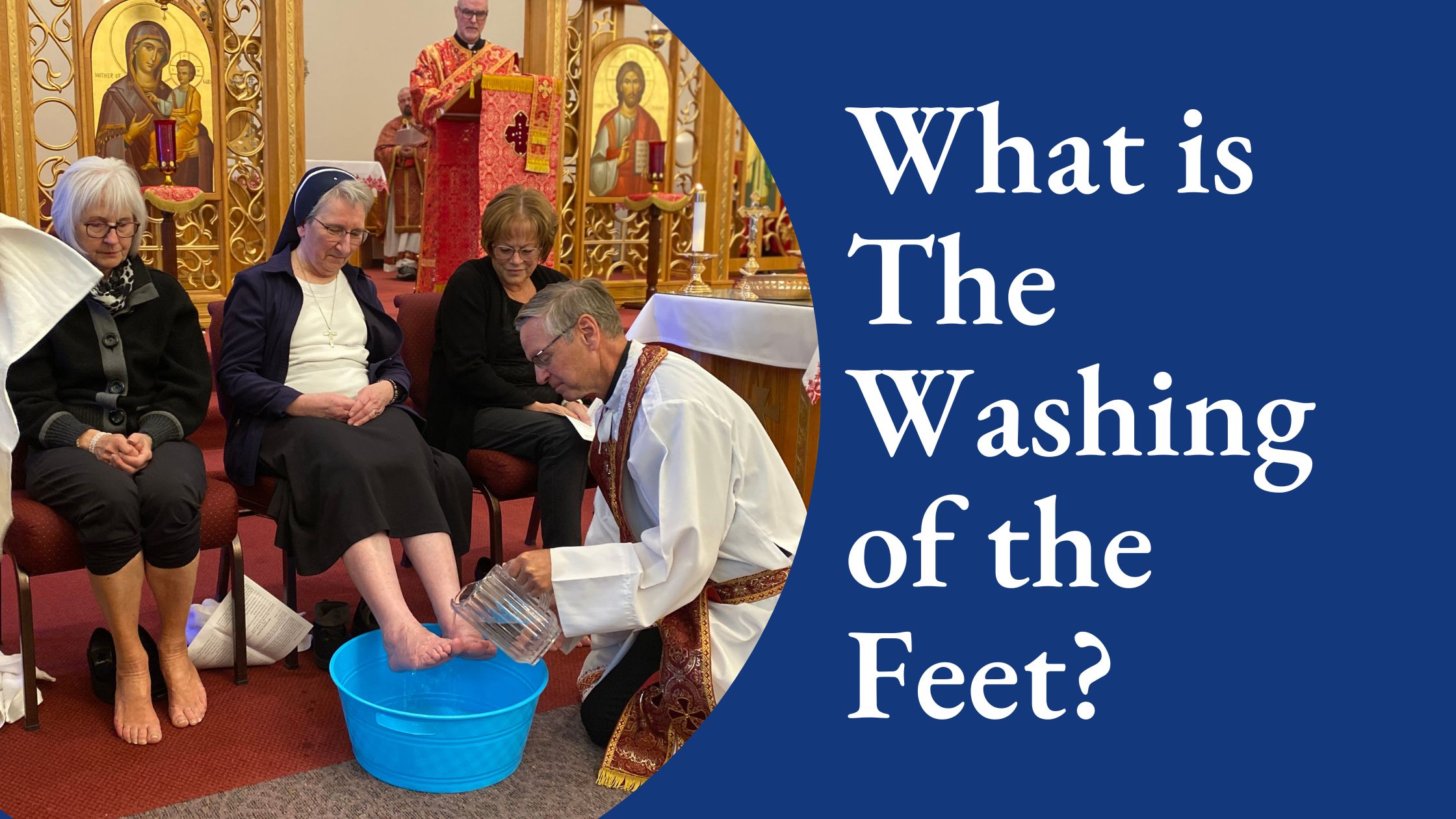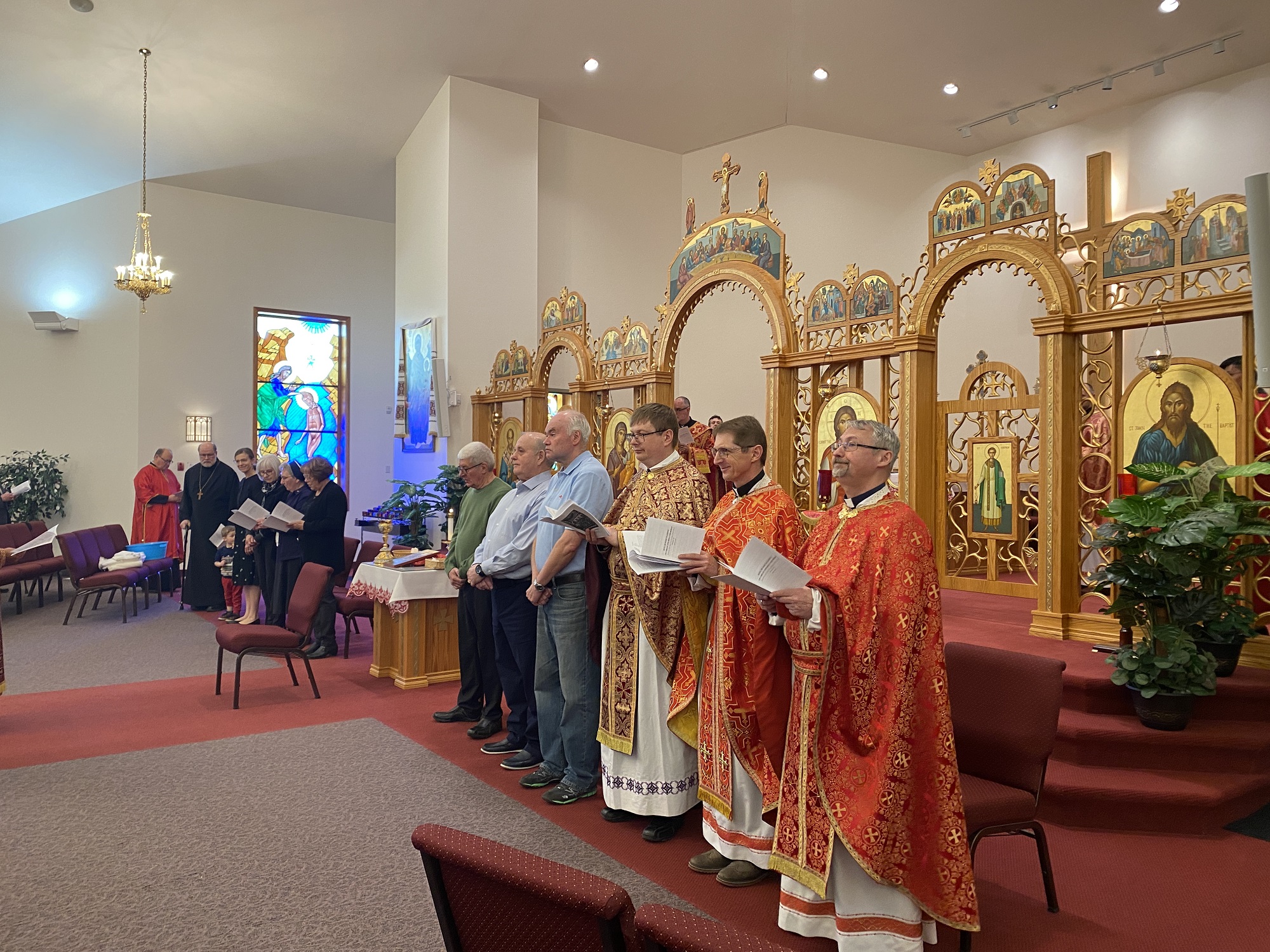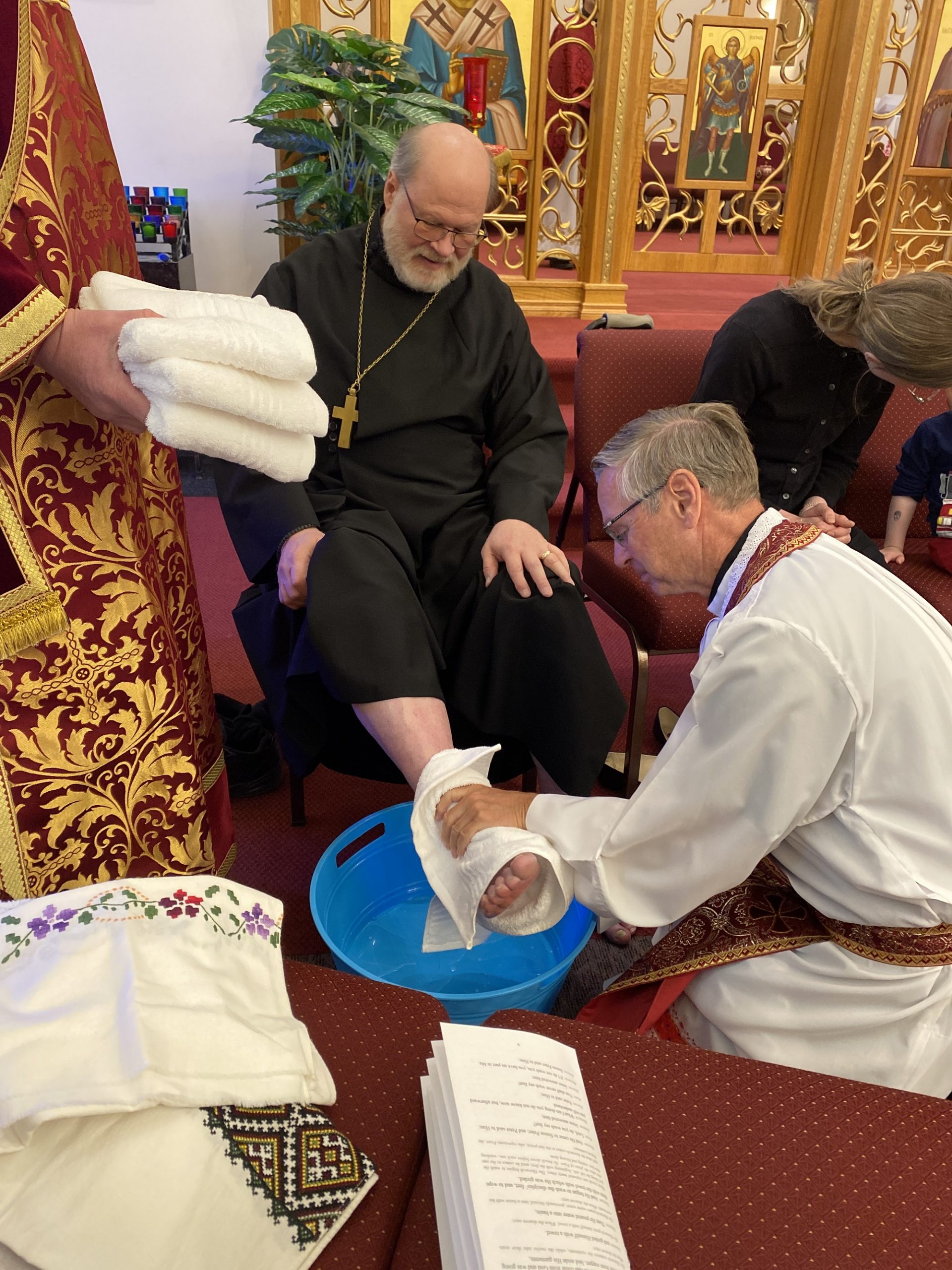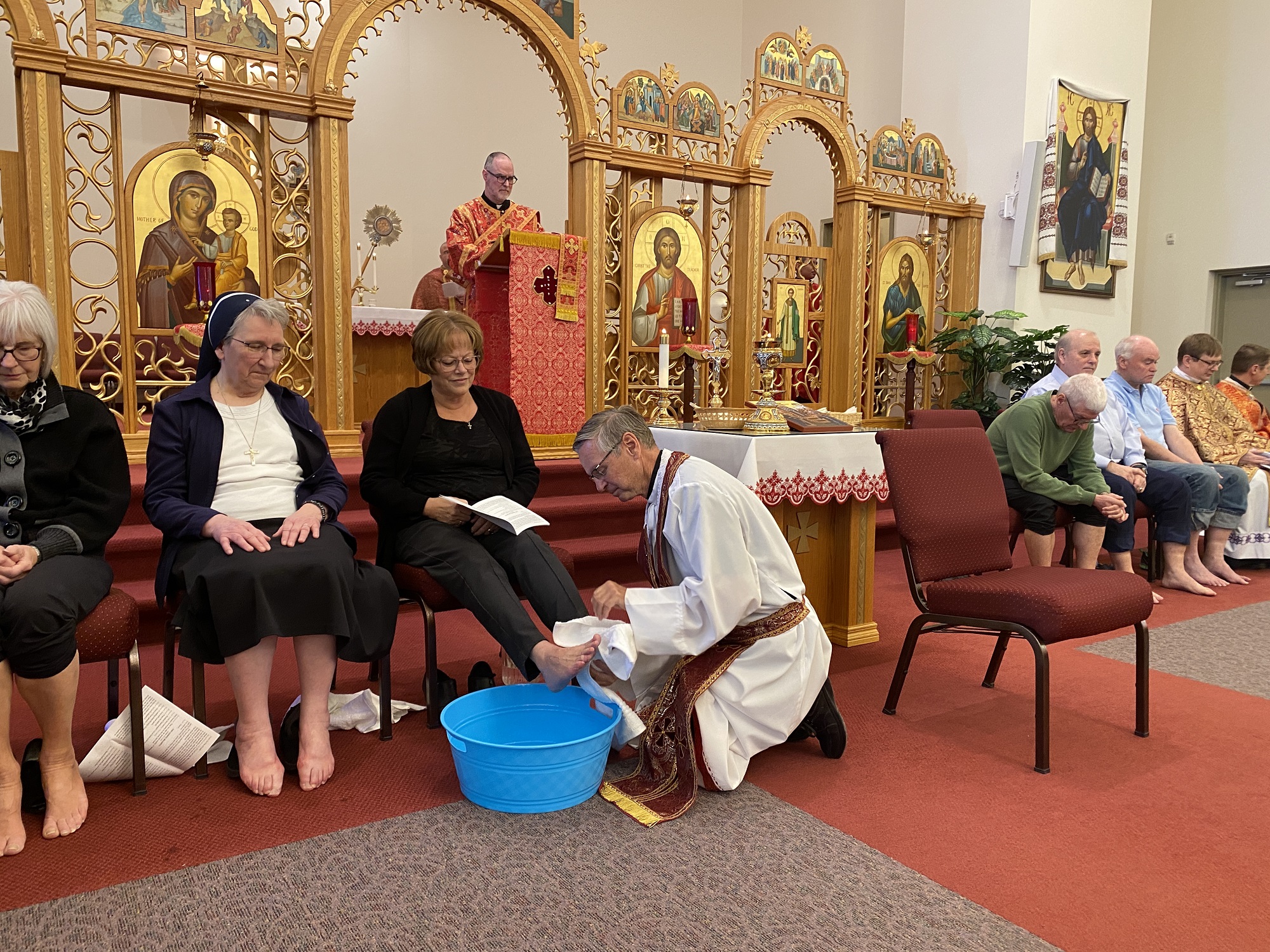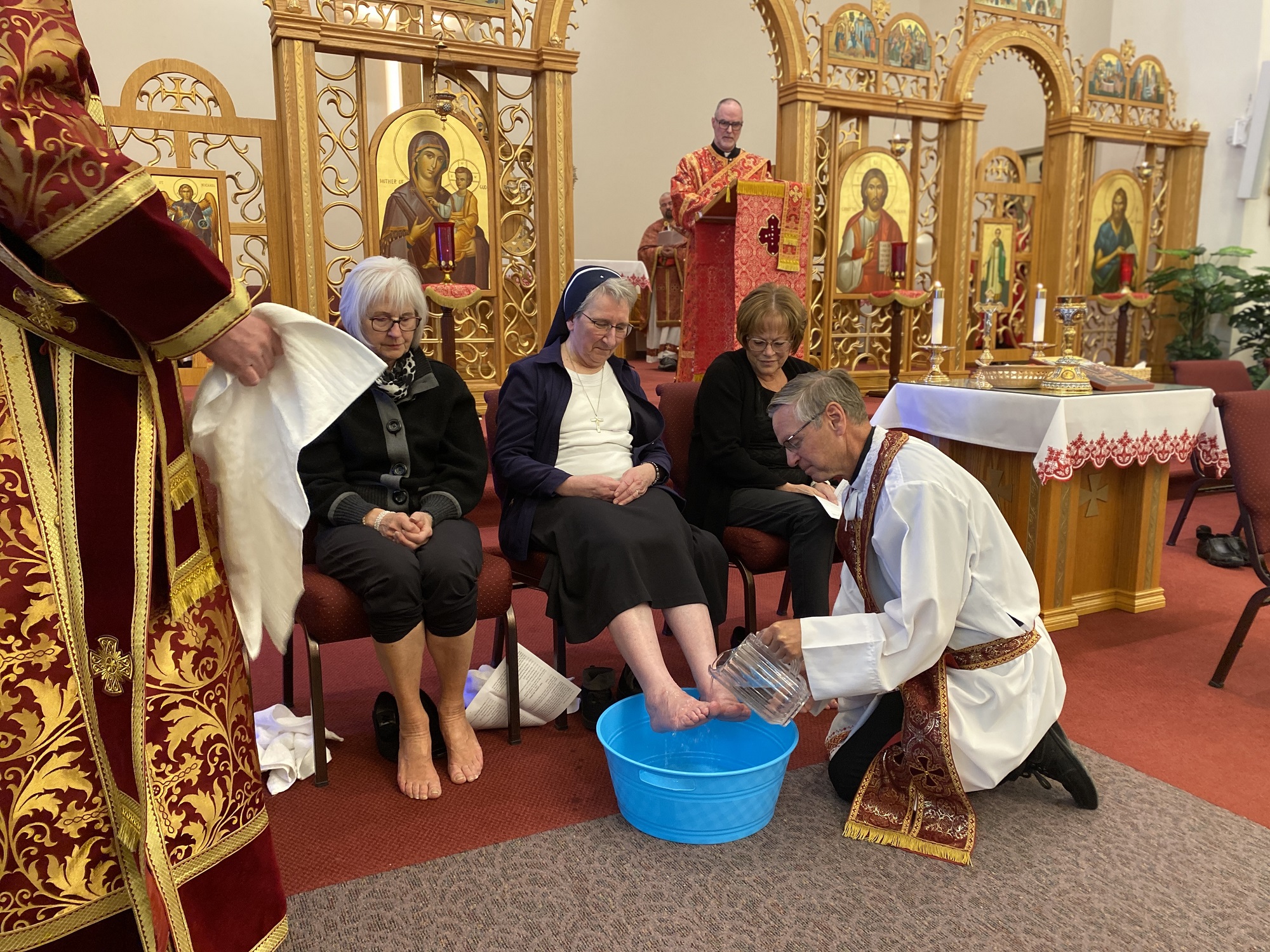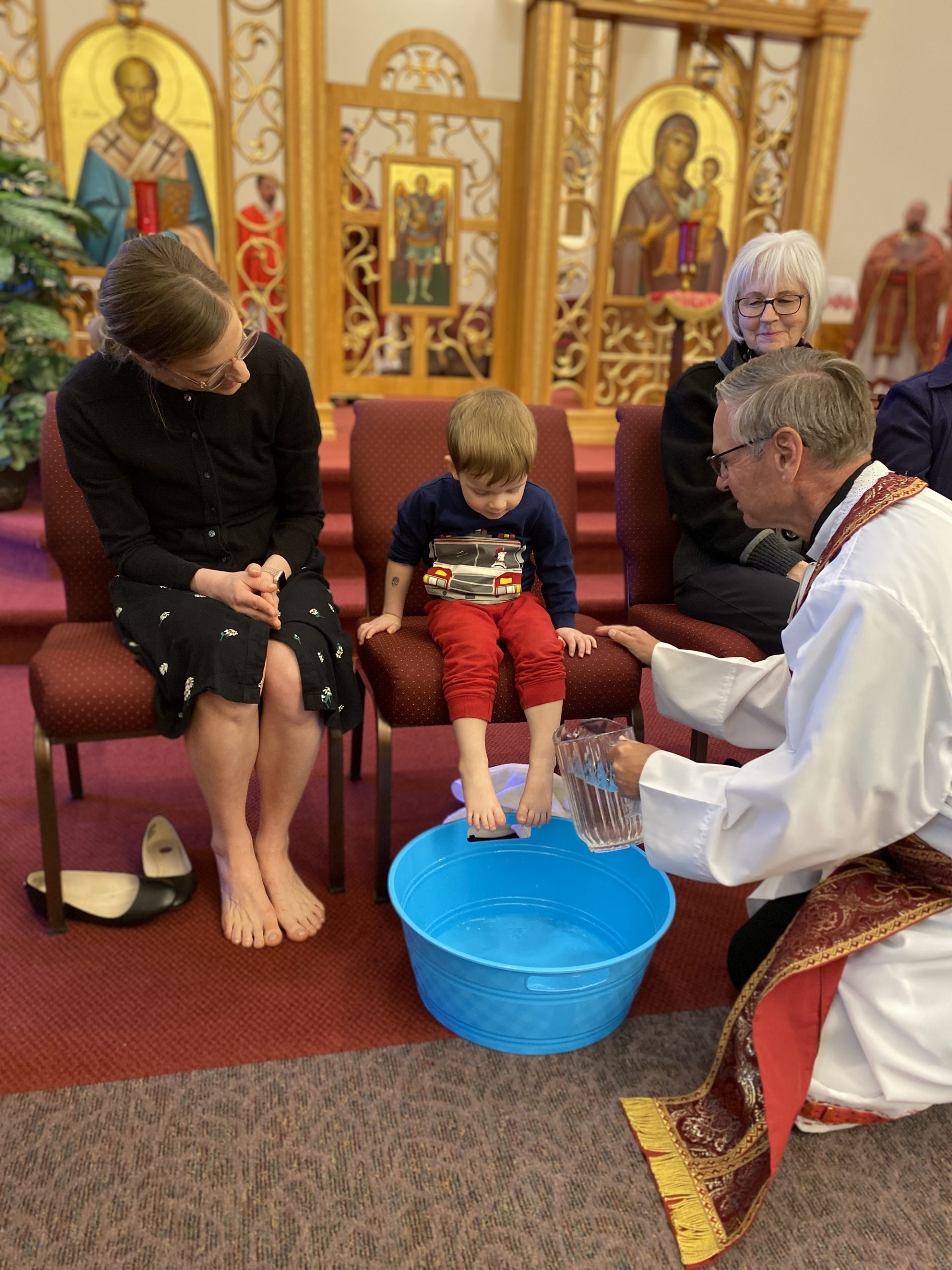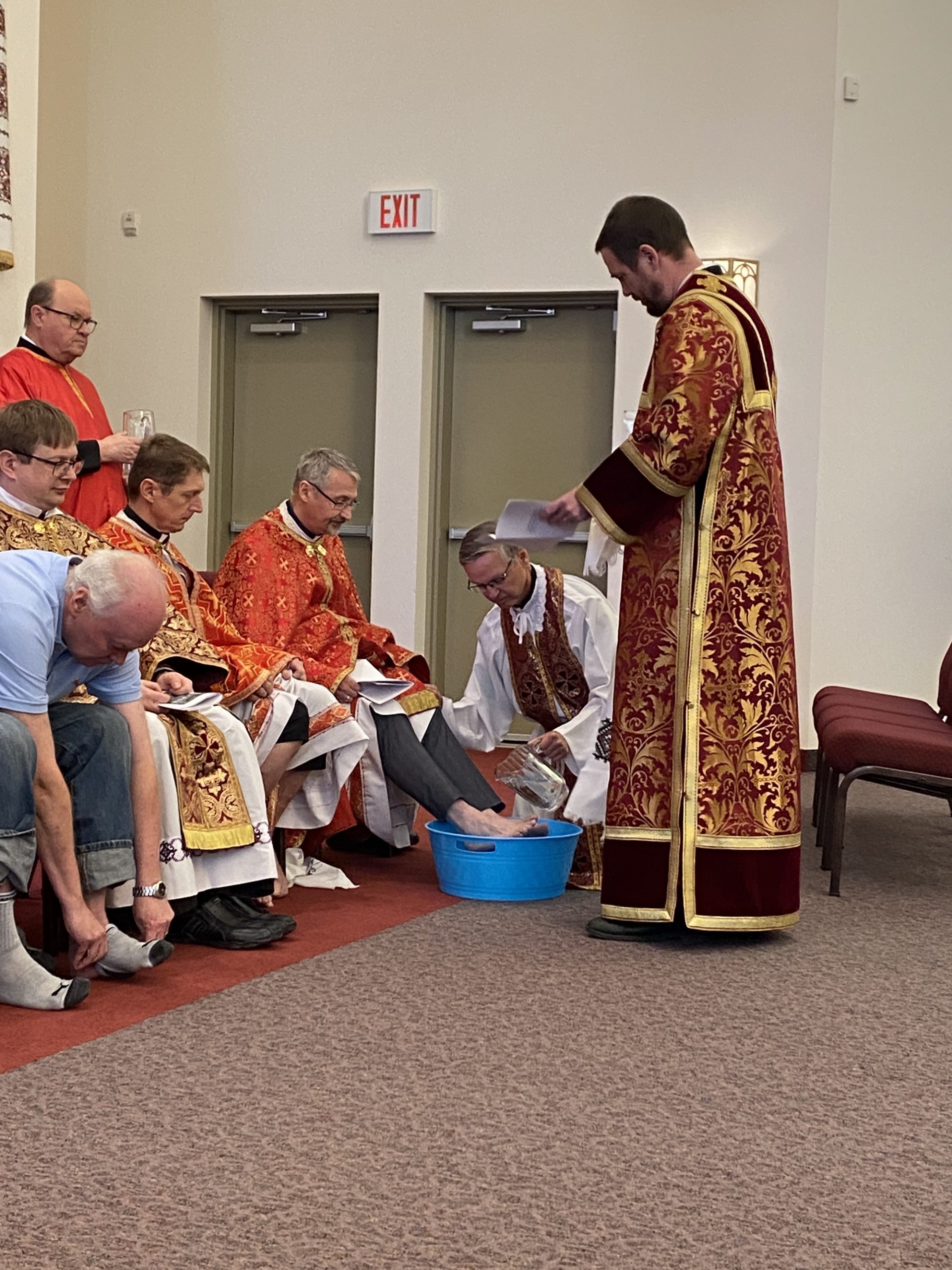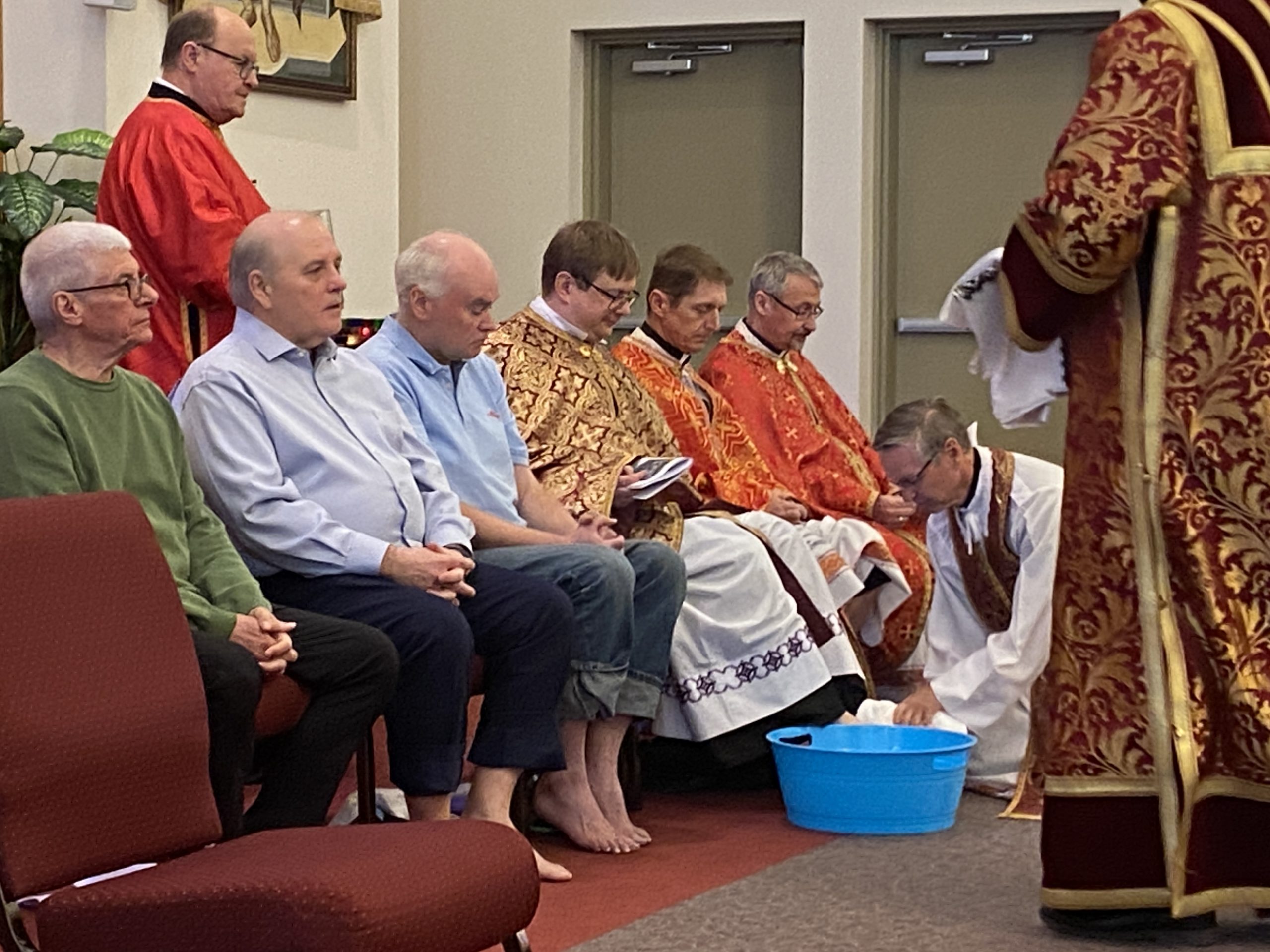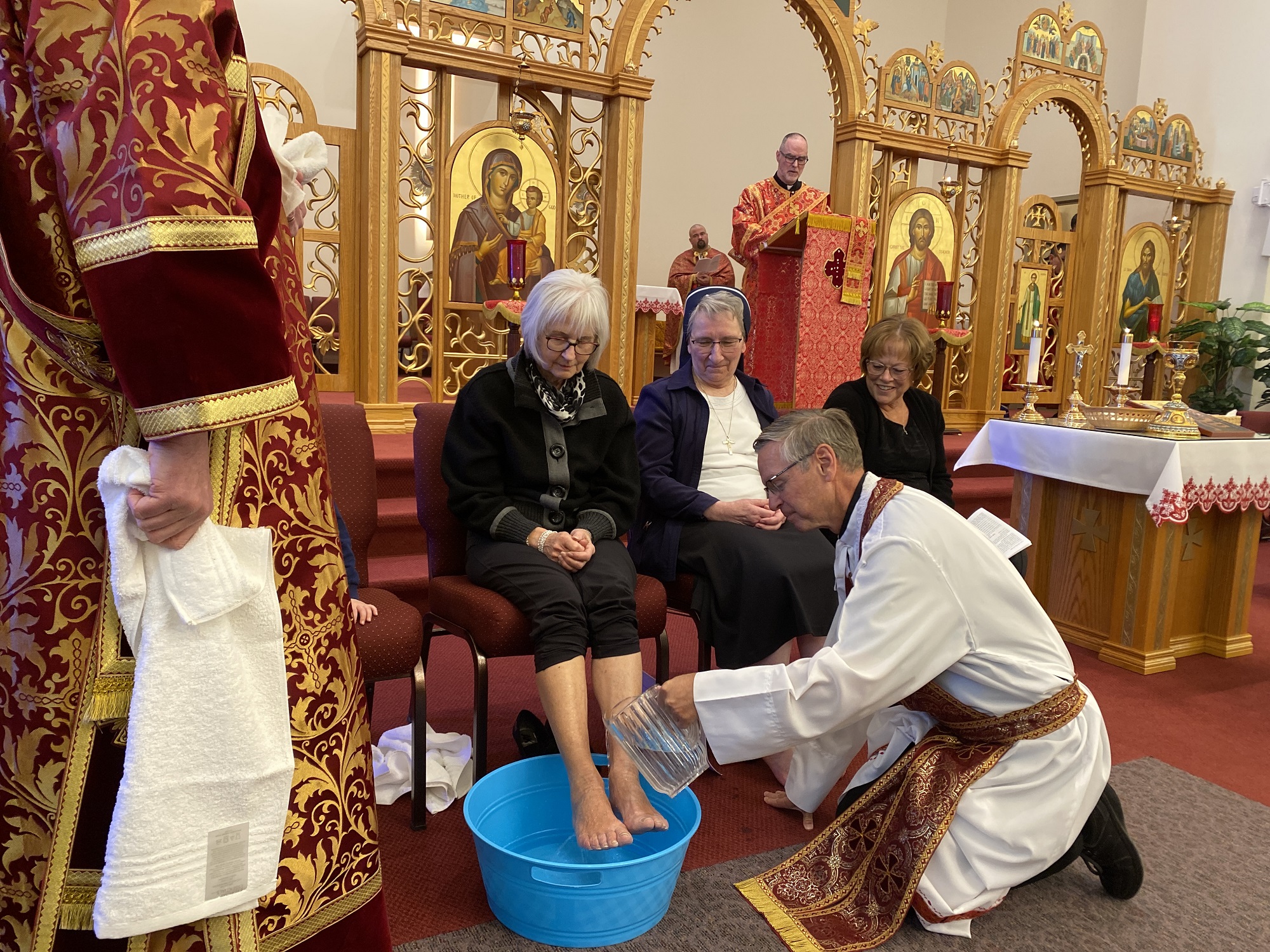In the Byzantine Churches, including in the Ukrainian Catholic Church, the rite of Washing of the Feet is traditionally celebrated by a bishop on Holy Thursday. This practice has its roots in chapter 13 of the Gospel of John, which describes how Jesus washed the feet of his disciples at the Last Supper. According to the liturgical books, this ceremony is performed on Holy Thursday by a bishop who washes the feet of twelve priests and deacons. In recent years, however, the rite has been adapted in some parishes, with a pastor washing the feet of his parishioners (this is likely inspired by the Roman Catholic Church, which has a ceremony of foot washing in every community on Holy Thursday, not just in cathedrals). Another adaptation is the practice in some places of including lay people in the group of twelve people whose feet are washed by the bishop.
The rite takes place at the end of the Vesperal Divine Liturgy. Twelve priests (or lay people) are chosen, representing the twelve apostles. After the ambo prayer, they take their places towards the front of the church where chairs have been set up for them. After a number of hymns and a litany, the deacon chants the gospel passage from John 13. As the deacon chants the gospel, the bishop takes off his vestments, and the twelve sit down. Then the bishop begins to wash the feet of each person, one by one, and dries the feet of each person with a towel. In this way, the bishop represents Christ, who humbled himself to take on our humanity and to give his life in service to us. When the bishop comes to the last priest, who represents Peter, the reading of the gospel becomes a dialogue. The priest repeats Peter’s objection to having his feet washed, and the bishop says the words of Christ, eventually convincing “Peter” that he must let the Lord wash his feet if he is to continue as a disciple of Christ. After the bishop finishes washing the feet of the twelve, he puts his vestments back on and reads the conclusion of the gospel passage.
The washing of the feet points us to the love and sacrifice of Christ, who gave his life for our salvation, and which is the fundamental theme of Holy Week, of Easter, and of all Christian life, worship, and faith. But this rite also reminds us that the life of a Christian disciple is to serve others in humility. In the final part of the gospel reading, from John 13:12-17, we hear that Christians should wash the feet of each other: Jesus commands his disciples to serve each other, just as he has served them. Even if most Ukrainian Catholics never experience this rite first hand, its meaning is still fundamental to our faith, and how we live it out: we can, and must, be servants of our fellow Christians, because our God come to serve us to the extent that he gives his life for us.

